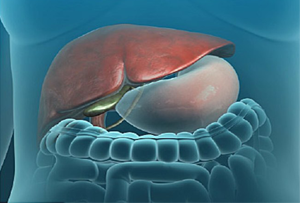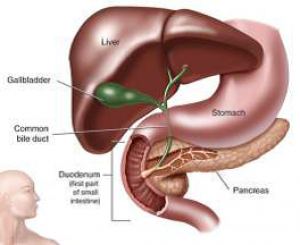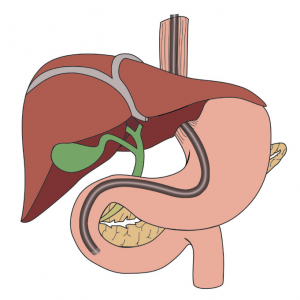Dr.Harshad Mahatme - Gall Bladder Surgeon in Nashik
GALLBLADDER TREATMENT
Dr. Harshad Mahatme General Surgeon in Nashik has an experience of 14 years in these fields. He is proficient in identifying, diagnosing and treating the various health issues and problems related to the medical field.This doctor has the requisite knowledge and the expertise not just to address a diverse set of health ailments and conditions but also to prevent them. Because, As a trained medical professional, this doctor is also familiar with the latest advancements in the related field of medicine.
The Gall Bladder is a small-sized organ that is positioned right under the liver. This organ stores the bile which is produced by the liver.
After consuming food Gall Bladder releases the bile & becomes flat like an empty rubber balloon. The Gall Bladder is full of bile before a meal and is similar to the size of a tiny pear. The Gall Bladder responds to the signals sent by nerves and releases the stored bile directly into the small intestine through a duct called the common bile duct.

WHAT ARE GALLBLADDER STONES?
Gallbladder stones or gallstones are the crystalline bodies developed abnormally in the gall bladder or bile ducts, of bile pigments, cholesterol, and calcium salts. Gallstones can cause severe pain and blockage in the bile duct. If the wall of the gallbladder is diseased suddenly it produces the stone and polyps.
Types Of Gallstones:
Cholesterol: Cholesterol stones are formed in the gallbladder as a consequence of altered hepatocellular and gallbladder function. Over the Creation of cholesterol by the liver is the important metabolic model of cholesterol gallstones and this may happen obesity, drugs, or other factors.
Gallbladder factors that increase stone production include hypomotility and the secretion of nucleating factors such as mucus glycoprotein. It is possible that both of these two factors are mediated by an increase in prostaglandin production by the gallbladder mucosa.
Pigment or Bilirubin: Pigment stones are either brown or black. Brownstones are formed of calcium bile iru binate and are usually associated with biliary infection. They happen in both gallbladder & bile ducts. Black pigment stones are very hard bilirubin polymers and are located mainly in the gallbladder.
Biliary sludge is a necessary precedent of gallstones. It comprises cholesterol monohydrate crystals, glycoproteins, and granules of calcium bile iru binate.
WHY DO GALLBLADDER STONES FORM?
Gallstones are usually the case. These small, hard deposits form in the gallbladder. They can also get into the bile duct, which joins the gallbladder with your intestines.
You are more likely to get gallstones if you:
- People who are overweight
- Excess estrogen from many fertilization, hormone replacement treatment, and birth control tablets may raise cholesterol levels in bile, reduce gallbladder emptying, and head to gallstones.
- People who have biliary infections can form gallstones.
- Somebody with hereditary blood disorders such as sickle cell anemia is more likely to develop pigment stones.
- Unnecessary dieting and consuming some cholesterol-reducing medications can also increase the risk of gallstone.

WHO IS AT RISK FOR GALLSTONES?
- Women are more prone than men
- People in their age 30’s and 40’s
- Overweight men and women
- People with rapid/ sudden weight loss
- Pregnant women, women on hormone treatment and birth control pills for an extended period.

SYMPTOMS OF GALLBLADDER STONES
- Severe pain in the right upper abdomen that increases fast & remains of a few minutes to hours
- Pain in the backbone within the shoulder edges
- Pain under the right shoulder
- Nausea or vomiting
Other irrelevant symptoms of gallstones include:
- Abdominal bloating (gas formation)
- Belching
- Indigestion
- Fever
HOW ARE GALLSTONES DIAGNOSED?
- Blood tests
- Total blood count
- Liver function test
- Coagulation profile
- Abdominal ultrasound
- Cholescintigraphy (HIDA scan)
- Endoscopic retrograde cholangiopancreatography (ERCP)
- Magnetic resonance cholangiopancreatography (MRCP)
TYPES OF TREATMENT FOR GALLSTONES?
The characteristic stones and diseased gallbladder should be removed by a surgical procedure called Laparoscopic Cholecystectomy. In the laparoscopic gallbladder surgery method, the gall bladder is removed using long narrow instruments through small holes in the abdomen.
- Significant management: Method of signs of pain by injectable or oral painkillers. No medical treatment is available for gallstones, can cure the infection. Injectable or oral antibiotics and supportive medications are available for treating the infection and overcoming the critical attack.
- Gallbladder Surgery: Gallbladder specialists perform surgery to eliminate the gallbladder (cholecystectomy) which is the only way to cure gallstones. This can be performed by regular method or a well-established endoscopic method which is now that ‘Gold Standard’, The surgery is called “Laparoscopic Cholecystectomy” The surgeon makes few small cuts in the abdomen and inserts surgical instruments and a small telescope with an amounted video camera into the abdomen. The camera sends an expanded image from inside the body to a video monitor, providing the surgeon a close-up view of the glands and tissues. While watching the monitor, the surgeon uses the tools to carefully separate the gallbladder from the liver, ducts, and vessels. The gallbladder is then removed through one of the small holes. Recovery usually occurs within a few hours in most cases in the hospital, followed by a few days of rest at home. As there is no loss to the muscle during laparoscopic surgery, victims have low pain and negligible cut complications.
- Non-surgical treatment: Non-surgical methods are used only in specific situations such as when a patient’s condition is not fit for anesthesia and surgery. This does not cure the victims as it only gives significant release.
WHAT ARE PRE-SURGERY AND POST-SURGERY INSTRUCTIONS?
Pre-surgery instructions
Some preoperative examinations like blood tests, X-ray or ECG and ultrasound of the gallbladder are required before surgery.
Follow your laparoscopic surgeon instructions toward each prescribed medication.
Post-surgery instructions
The patient is kept under observation for a few hours and then shifted to the room.
allowed to drink oral liquids on the same day of surgery.
permitted to moving its own as soon as possible after the operation.
Diet after surgery
The patient is generally allowed to sip water immediately after the operation and liquids on the day of operation. The liquids may be water/ clear soups/ tea/ coffee/ salted lassi,etc.
The next day after surgery onwards, a normal diet is given and there are no specific restrictions in diet.
Exercise/ Movement
As soon as the patient is out of anesthesia and is moved to the room, the patient is can start moving on his/her own Because he attends to its toilet needs. the Actions are supported in most patients because this causes a moving decrease in pain and increase the sense of well being.
